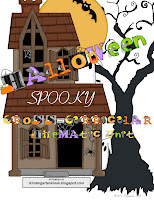Looking for a great way to fill the days between Halloween and Thanksgiving?
This 90 page Bear unit is divided into areas of literature, music, art, literacy, math, social studies, science, creative writing, word wall, and guided reading. The activities are clearly written, easy to use, and need limited amounts of preparation. The lessons (games or activities) included are scripted. They are written in a format that can be easily taught by the teacher or readily handed off to a parent volunteer or a classroom aide with complete confidence that objectives of the lesson will be reached.
Literacy Activities:
Woodland Friends At the Park: Identifying Beginning and Ending Sounds
Corduroy’s Alphabet Game: Identification of Upper & Lowercase letters
ABC Honey Hunt: Identifying Alphabet Letters & Naming Letter Sounds
Bear Match: Matching Letters of the Alphabet
Bear Twins: Compound Word Deletion
Math Activities:
Teddy Bear Picnic: Spatial Intelligence and Estimation Strategies
Bears & Buttons: Counting With a One-to-one Correspondence
Pattern Bears: Extending Patterns
Race Car Riot: Ordering Numbers 1-12
Counting Hives: Number Sense Worksheet
Art Projects
The Three Bears
Poky Bear
Corduroy Portfolio Sample
How To Draw A Bear
Social Studies
Families: Portfolio Page
Writing Prompts/Word Wall
What I Know About Bears
The Three Bears
Bears Word Wall Words
Science
Hibernating Bears: Bear Facts
Songs
Three Brown Bears
Poky Bear
Teddy Bear, Teddy Bear
Corduroy
Guided Reading Books
Where Is My Bear?


























































